Perfect Heat Press Sublimation Settings: Solve Common Print Issues
For perfect heat press sublimation, set your machine to 380–400°F for 40–60 seconds with medium pressure. Ensure your substrate is clean and pre-pressed to avoid moisture issues.
Use high-quality sublimation paper to prevent ghosting. Adjust time or temp slightly if colors fade or bleed. Always test on scrap material first to nail consistent, vibrant prints.
Worried about damaging your heat press or wasting materials? We’ll help you avoid those pitfalls too. With advice from Subli Genius Print, are you ready to achieve perfect prints every time?
When I started with sublimation printing, I was eager but quickly realized that getting the perfect print wasn’t just about having the right equipment. The real magic lies in nailing the heat press settings.

Trust me, I’ve had my fair share of blurry prints, colors that didn’t pop, and ghosting effects that made me want to pull my hair out. But through lots of trial and error, I’ve learned how to get those settings just right.
Sublimation Heat Press Settings
Temperature:
Temperature is crucial in sublimation printing because it activates the sublimation dyes and allows them to bond with the substrate. If the temperature is too low, the transfer might be incomplete, leading to dull colors. If it’s too high, you could scorch the material or cause the dyes to bleed.
Typical Temperature Ranges:- Fabrics (like polyester): 385°F to 400°F
- Ceramic Mugs: 400°F
- Metal and Hard Boards: 375°F to 400°F
These ranges can vary slightly depending on the specific substrate and ink you’re using, so always check the manufacturer’s recommendations.
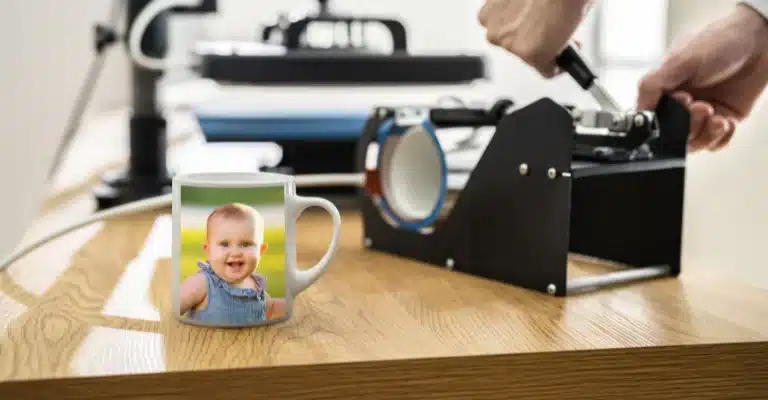
Pressure:
Pressure is just as important as temperature. Too much pressure can cause the substrate to warp or damage, while too little pressure can result in uneven transfers.
Adjusting Pressure:- Light Pressure: Ideal for delicate items that might be crushed or damaged easily.
- Medium Pressure: Works well for most fabric transfers.
- Heavy Pressure: Necessary for hard substrates to ensure a complete and even transfer.
Experiment with different pressure settings on test pieces to find the sweet spot for your specific materials.
Time:
Time is the third critical component. Pressing for too long can cause the image to blur or bleed while pressing for too short might not transfer the image completely.
Recommended Pressing Times:- Fabrics (like polyester): 45 to 60 seconds
- Ceramic Mugs: 180 to 200 seconds
- Metal and Hard Boards: 60 to 90 seconds
Again, always check the specific instructions for your heat press and materials, as these can vary.
Guide to Setting Up Your Heat Press
If you’re new to sublimation printing, setting up your heat press can be overwhelming. But don’t worry, I’ll guide you through it step-by-step. By the end of this section, you’ll feel confident and ready to start pressing!
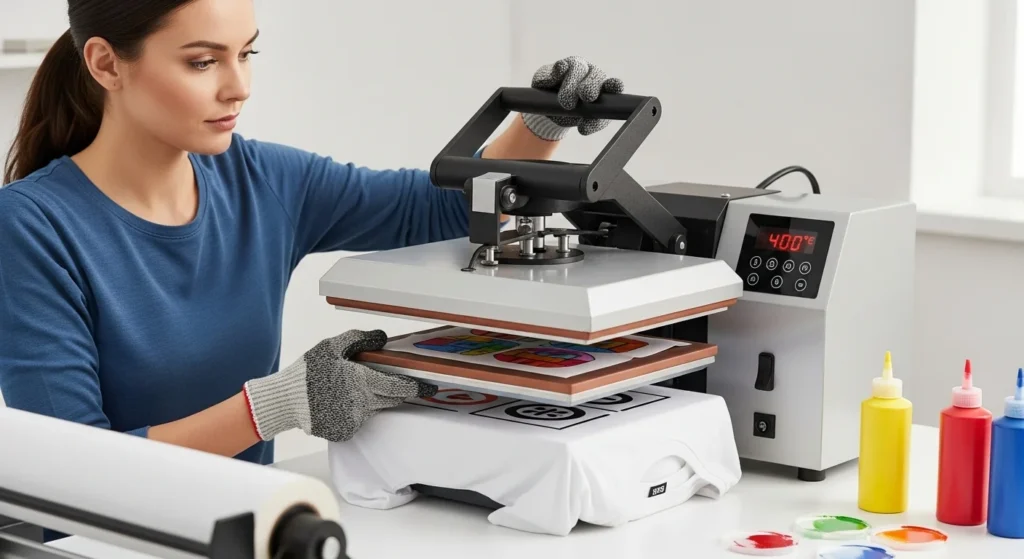
Check out Sublimation Heat Guide: Unlocking the Art of Printing
Step-by-Step Instructions
- Power Up: Turn on your heat press and allow it to warm up.
- Adjust Temperature: Use the control panel to set the desired temperature based on your working material. For example, set it to 400°F for ceramic mugs or 385°F for polyester fabrics.
- Preheat: Let the heat press reach the set temperature before starting any pressing.
- Manual Adjustment: Most heat presses have a knob or lever to adjust pressure. Turn it clockwise for more pressure and counterclockwise for less.
- Test Pressure: Place a sample item in the press and close it. You should feel resistance, but it shouldn’t be too difficult to close.
- Check Evenness: Ensure that the pressure is even across the entire surface. Uneven pressure can result in incomplete transfers.
3. Setting the Time:
- Timer Setting: Use the control panel to set the pressing time. 45 to 60 seconds is ideal for most fabric transfers. For mugs, set it for 180 to 200 seconds.
- Start Pressing: Place your substrate and transfer paper in the press, close it, and start the timer.
Tips for Testing Settings on Scrap Materials
Before diving into your actual projects, it’s a good idea to test your settings on scrap materials. This can save you a lot of frustration and wasted materials.
1. Use Test Pieces:
- Keep some spare or defective items for testing. These can be old shirts, pieces of fabric, or chipped mugs.
2. Make Small Adjustments:
- Adjust one setting at a time if your first test isn’t perfect. For example, try increasing the temperature slightly if the print is too light. If the edges are blurry, reduce the time or pressure.
3. Take Notes:
- Keep a notebook or digital log of your successful settings for different materials. This will be a handy reference for future projects.
Personal Anecdote:
I ruined a few shirts when I started because I didn’t pre-test my settings. I quickly learned the value of using scrap materials. One of my first successful prints was a simple logo on an old T-shirt, and seeing the vibrant colors transfer perfectly was incredibly rewarding. It gave me the confidence to move on to more complex projects.
Troubleshooting Common Issues
Even with the right settings, sometimes things can go wrong. Here are some common sublimation printing issues and how to fix them.
1. Blurry Prints
Causes:
- Excessive Time: Pressing for too long can cause the image to blur.
- Incorrect Pressure: Too much or too little pressure can lead to blurry prints.
Solutions:
- Adjust Time: Reduce the pressing time slightly. Decrease in 5-10-second increments until you get a clear print.
- Check Pressure: Ensure the pressure is neither too high nor too low. Medium pressure usually works best for most materials.
2. Colors Not Transferring Correctly
Causes:
- Low Temperature: The colors won’t transfer properly if the temperature is too low.
- Inadequate Time: Not pressing long enough can result in incomplete color transfer.
Solutions:
- Increase Temperature: Gradually increase the temperature in small increments, checking the results after each adjustment.
- Extend Time: Add a few more seconds to the pressing time and see if the colors improve.
3. Ghosting Effects
Causes:
- Movement During Pressing: If the transfer paper shifts during pressing, it can cause ghosting effects.
- Uneven Pressure: Inconsistent pressure can lead to ghosting.
Solutions:
- Secure Transfer Paper: Use heat-resistant tape to keep the transfer paper in place.
- Ensure Even Pressure: Check that the pressure is evenly distributed across the entire surface of the substrate.
4. Faded Prints
Causes:
- Low Ink Density: Using too little ink can cause faded prints.
- Incorrect Settings: Incorrect temperature, pressure, or time settings can lead to faded prints.
Solutions:
- Increase Ink Density: Ensure you use enough ink for the transfer.
- Recheck Settings: Verify that all settings are correct according to the material and heat press manufacturer’s guidelines.
5. Lines or Streaks
Causes:
- Dirty Heat Press: Residue or lint on the heat press can cause lines or streaks.
- Defective Transfer Paper: Damaged or poor-quality transfer paper can cause these issues.
Solutions:
- Clean Heat Press: Regularly clean your heat press to remove debris or residue.
- Use High-Quality Transfer Paper: Invest in good-quality transfer paper and check for defects before use.
Personal Anecdote:
My first major issue was ghosting on a batch of custom mugs. I couldn’t figure out why the prints were blurry until I realized the transfer paper shifted slightly when I closed the press. The ghosting disappeared after securing the paper with heat-resistant tape, and the prints were perfect.
Material-Specific Settings
Different materials require different settings for the best sublimation results. Let’s break down the ideal temperature, pressure, and time settings for 3 common sublimation substrates. Check out Sublimation Material and Product Selection Calculator.
1. Fabrics
Polyester Fabric:
- Temperature: 385°F to 400°F
- Pressure: Medium
- Time: 45 to 60 seconds
Cotton Blends (with sublimation coating):
- Temperature: 375°F to 385°F
- Pressure: Medium
- Time: 50 to 60 seconds
Tips for Fabrics:
- Ensure the fabric is smooth and wrinkle-free before pressing.
- Use a protective sheet to avoid any scorching or marks.
2. Hard Substrates
Ceramic Mugs:
- Temperature: 400°F
- Pressure: Medium to heavy
- Time: 180 to 200 seconds
Metal (e.g., photo panels):
- Temperature: 375°F to 400°F
- Pressure: Medium
- Time: 60 to 90 seconds
Acrylic:
- Temperature: 385°F
- Pressure: Light to medium
- Time: 90 seconds
Tips for Hard Substrates:
- Use heat-resistant tape to secure the transfer paper and prevent movement.
- Allow items like mugs to cool slowly to avoid cracking.
3. Specialty Items
Phone Cases:
- Temperature: 375°F to 385°F
- Pressure: Medium
- Time: 60 seconds
Puzzles:
- Temperature: 400°F
- Pressure: Medium
- Time: 50 to 60 seconds
Keychains:
- Temperature: 385°F to 400°F
- Pressure: Medium
- Time: 45 to 60 seconds
Tips for Specialty Items:
- Ensure the entire surface is covered by the transfer paper.
- Be careful when handling hot items immediately after pressing.
Personal Anecdote:
One of my favorite projects was creating custom phone cases for friends and family. I initially struggled with uneven pressure, which caused some parts of the design to transfer poorly. By adjusting the pressure and using a foam pad to ensure even contact, I achieved beautiful, vibrant designs that everyone loved.
Explore more information or a step-by-step how-to guide.
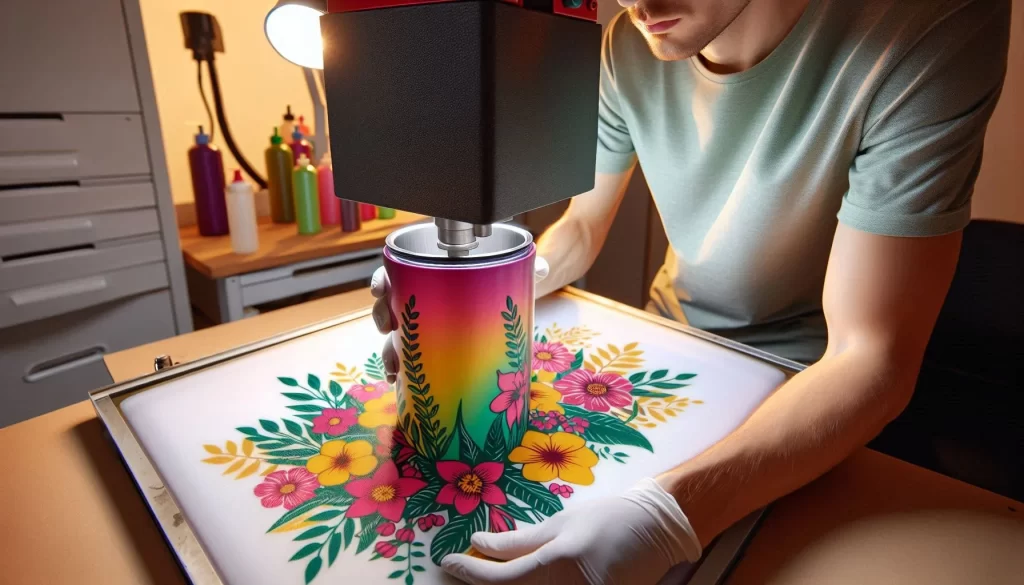
Best Practices for Optimal Results
To get the most out of your sublimation printing, follow a few best practices to ensure vibrant, flawless prints.
Consistency in Settings for Large Batches
Consistency is key when working on large batches. Once you’ve found the right settings, stick to them for the entire batch to ensure uniformity across all items.
Tips:
- Document Settings: Keep a detailed log of each project’s temperature, pressure, and time settings. This will help you replicate successful results in the future.
- Test Periodically: Test a sample item from the batch to ensure the settings are still optimal. This can help catch any issues early on.
Maintenance Tips for Your Heat Press
Regular maintenance of your heat press is crucial for optimal performance and longevity.
Maintenance Checklist:
- Clean the Heat Plate: Use a soft cloth and a mild cleaner to remove residue or ink buildup. Avoid abrasive cleaners that can damage the surface.
- Inspect Pressure Settings: Regularly check the pressure adjustment mechanism to ensure it’s functioning smoothly.
- Lubricate Moving Parts: Apply a small amount of lubricant to any moving parts to prevent wear and tear.
- Check Electrical Connections: Ensure all electrical connections are secure and free of dust or debris.
Achieving Vibrant Colors and Sharp Details
Getting vibrant colors and sharp details involves more than just the right settings. Here are a few tips to elevate your prints: Check out How Long Do Sublimation Prints Stay Vibrant? The Ultimate Guide.
Tips:
- Use High-Quality Sublimation Paper: Invest in good-quality paper that transfers ink effectively.
- Pre-Press Your Substrate: Pre-pressing for a few seconds can help remove moisture and wrinkles from fabrics, ensuring a smoother transfer.
- Calibrate Your Printer: Regularly calibrate your sublimation printer to ensure accurate color reproduction.
- Use a Protective Sheet: A Teflon or parchment paper sheet can prevent stray ink from transferring onto your heat press or other items.
Product-Specific Recommendations
Choosing the right settings for different heat press models and sublimation materials can make a huge difference in the quality of your prints. Here’s a guide to help you select settings based on various heat press models and materials. You can find these 4 products check here.
Recommended Settings for Popular Heat Press Models
1. Clamshell Heat Presses:
- Temperature Range: 385°F to 400°F
- Pressure: Adjustable from light to heavy; check for even pressure across the platen.
- Time: 45 to 60 seconds for fabrics, longer for hard substrates.
2. Swing-Away Heat Presses:
- Temperature Range: 375°F to 390°F
- Pressure: Medium to heavy; ensure the platen moves away smoothly to avoid shifting.
- Time: 50 to 60 seconds for most materials.
3. Ragged Presses:
- Temperature Range: 380°F to 400°F
- Pressure: Adjustable; maintain consistent pressure by checking frequently.
- Time: 45 to 60 seconds for fabric; longer for thicker items.
4. Heat Press with Digital Controller (automatic):
- Temperature Range: 385°F to 400°F
- Pressure: Adjustable; use the digital gauge to ensure precise settings.
- Time: 45 to 60 seconds; digital controls help you fine-tune settings for accuracy.

Differences Between Budget and High-End Presses
Budget Heat Presses:
- Temperature Accuracy: There may be slight fluctuations in temperature.
- Pressure Adjustment: Manual knobs; pressure may not be as consistent.
- Build Quality: Generally less robust, affecting long-term durability.
High-End Heat Presses:
- Temperature Accuracy: More precise with digital temperature controls.
- Pressure Adjustment: Often, there are more precise and even pressure adjustments.
- Build Quality: Higher quality materials and construction lead to more consistent results and longevity.
Tips for Choosing the Right Heat Press:
- Assess Your Needs: Consider the volume and types of projects you plan to work on. For large volumes, investing in a higher-end model might be worth it.
- Check Reviews: Review user reviews and ratings to gauge reliability and performance.
- Consider Support and Warranty: High-end models often come with better support and longer warranties, which can be valuable for long-term use.
Expert Tips and Tricks
To excel in sublimation printing, you must follow the basic steps, but incorporating expert tips can elevate your results. Here are some insider tricks and common mistakes to avoid that can make a big difference in your printing process. Check out Sublimation Temperature & Pressure Calculator.
Insider Tips from Experienced Practitioners
1. Preheat Your Substrate: Preheating your substrate for a few seconds can help remove moisture and wrinkles. This ensures a smooth transfer and better color vibrancy.
2. Use a Heat Press Pillow: For uneven surfaces or items with contours, a heat press pillow or foam pad can help distribute pressure more evenly, ensuring complete contact between the transfer and substrate.
3. Utilize Teflon Sheets: Place a sheet between the transfer paper and the heat press plate to protect the press and substrate from stray ink or residue.
4. Regularly Clean Your Heat Press: Dust and residue can affect print quality. Regularly clean the heat press plate with a soft cloth to maintain optimal performance.
5. Test Before Committing: Always do a test press with your specific substrate and settings. It can save you from costly mistakes and ensure you get the desired results.
6. Check for Even Pressure: Ensure the pressure is even across the entire platen. Uneven pressure can lead to incomplete or poor-quality transfers.
Common Mistakes to Avoid
1. Overloading the Press: Placing too many items in the press simultaneously can result in uneven pressure and temperature, leading to inconsistent prints.
2. Ignoring Manufacturer Instructions: Always follow the specific instructions provided by the substrate and heat press manufacturers. Ignoring these can lead to poor results.
3. Using Old or Poor-Quality Inks: Using outdated or low-quality sublimation inks can affect the vibrancy and accuracy of your prints. Invest in high-quality inks for the best results.
4. Neglecting Temperature Calibration: Regularly calibrate your heat press to ensure it reaches and maintains the correct temperature. Inaccurate temperatures can ruin your prints.
5. Skipping the Pre-Press: Neglecting to pre-press fabrics or substrates can lead to uneven transfers and reduced image quality. A quick pre-press helps ensure a clean and crisp print.
At Subli Genius Print, we emphasize the importance of getting these settings just right. Each step plays a role in perfecting your sublimation process, from testing settings on scrap materials to avoiding common pitfalls like overloading the press and using poor-quality inks.
Regular maintenance, consistent settings, and expert tips can help you create stunning designs and ensure long-lasting project satisfaction.
As you continue your sublimation journey with Subli Genius Print, remember that every mistake is an opportunity to learn and improve. With practice and patience, you’ll find what works best for you and achieve your desired professional results.
What challenges have you faced with sublimation heat press settings, and how did you overcome them? Feel free to share your experiences and tips!
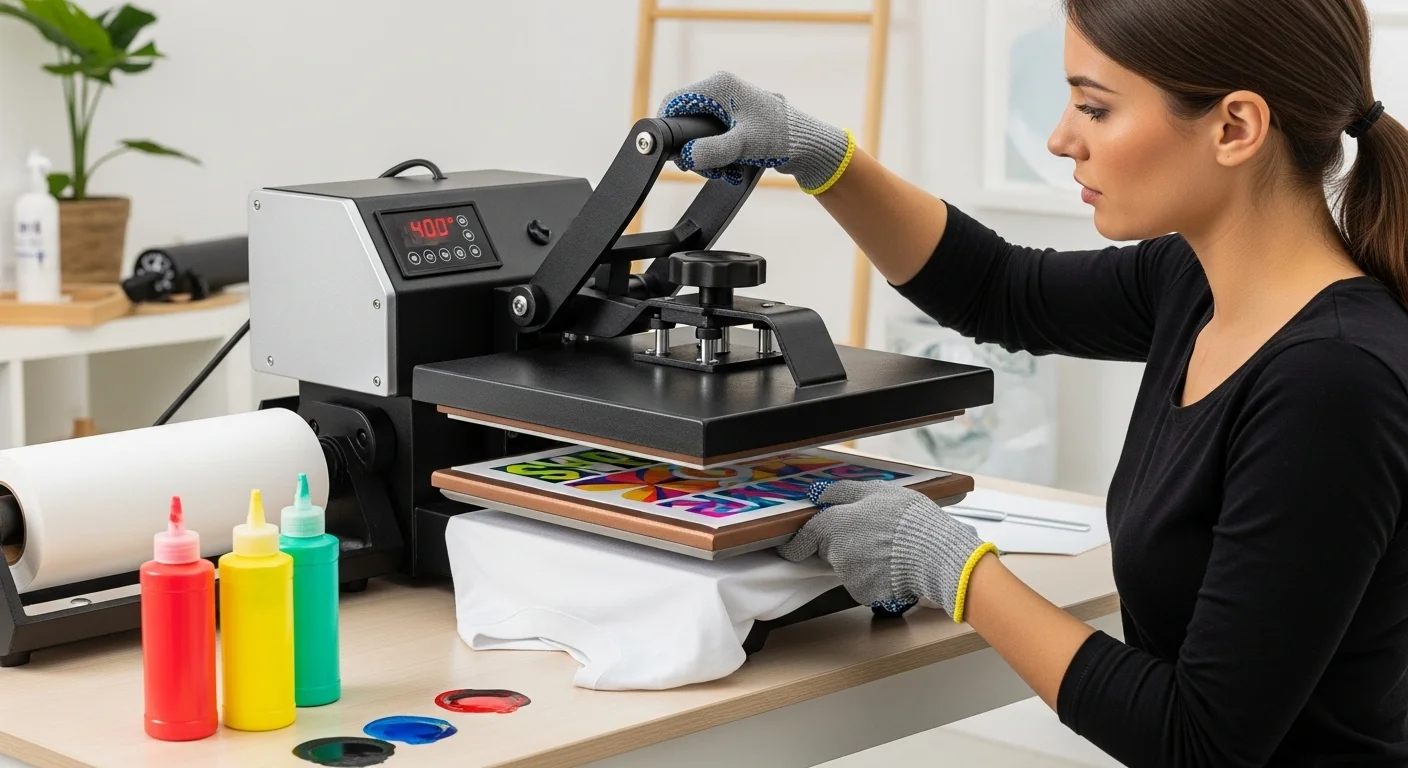
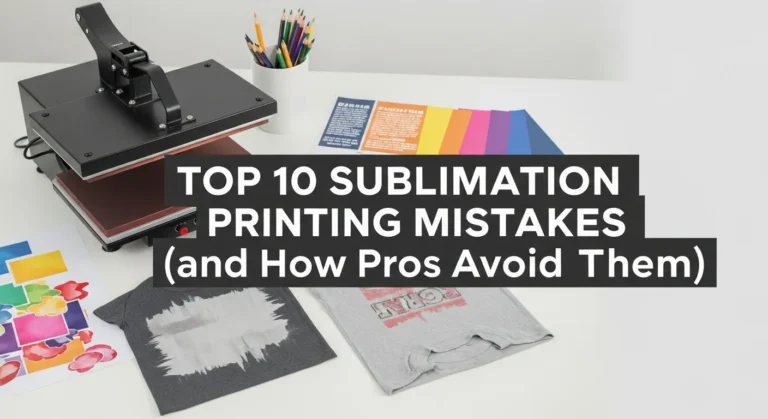

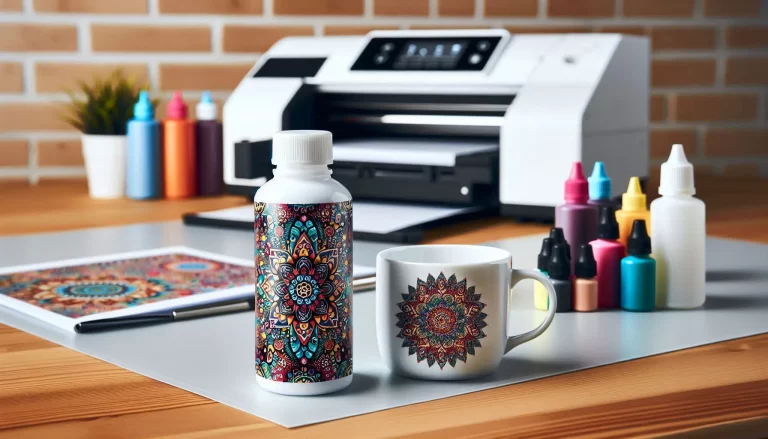
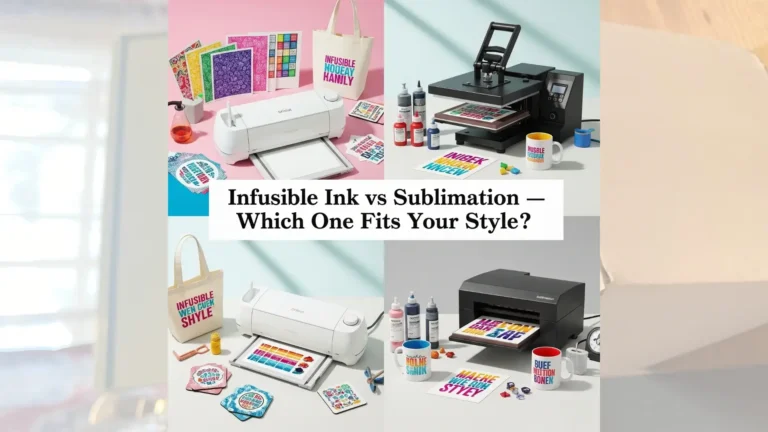

6 Comments